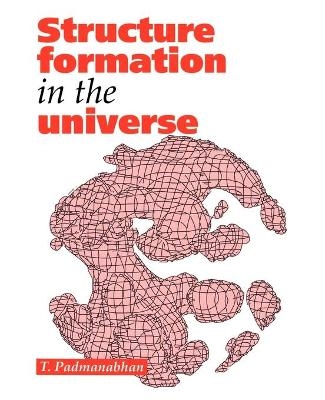
Structure Formation in the Universe
Seiten
1993
Cambridge University Press (Verlag)
9780521424868 (ISBN)
Cambridge University Press (Verlag)
9780521424868 (ISBN)
Understanding the way in which large-scale structures like galaxies form remains the most challenging problem in cosmology today. This text provides an up-to-date and pedagogical introduction to this exciting area of research. Each chapter is accompanied by a comprehensive set of exercises to help the reader in self-study.
Understanding the way in which large-scale structures like galaxies form remains the most challenging problem in cosmology today. This text provides an up-to-date and pedagogical introduction to this exciting area of research. Part 1 deals with the Friedmann model, the thermal history of the Universe, and includes a description of observed structures in the Universe. Part 2 describes the theory of gravitational instability in both the linear and non-linear regimes. This part also includes chapters on the microwave background radiation, large-scale velocity fields, quasars and high redshift objects. Part 3 covers inflation, cosmic strings and dark matter. Each chapter is accompanied by a comprehensive set of exercises to help the reader in self-study. The book will be of interest to research and graduate students in cosmology, relativity, theoretical physics, astrophysics and astronomy. It is also suitable for use as a graduate textbook for introductory graduate level courses.
Understanding the way in which large-scale structures like galaxies form remains the most challenging problem in cosmology today. This text provides an up-to-date and pedagogical introduction to this exciting area of research. Part 1 deals with the Friedmann model, the thermal history of the Universe, and includes a description of observed structures in the Universe. Part 2 describes the theory of gravitational instability in both the linear and non-linear regimes. This part also includes chapters on the microwave background radiation, large-scale velocity fields, quasars and high redshift objects. Part 3 covers inflation, cosmic strings and dark matter. Each chapter is accompanied by a comprehensive set of exercises to help the reader in self-study. The book will be of interest to research and graduate students in cosmology, relativity, theoretical physics, astrophysics and astronomy. It is also suitable for use as a graduate textbook for introductory graduate level courses.
Preface; Part I. The Smooth Universe: 1. Introducing the Universe; 2. The Friedmann model; 3. Thermal history of the Universe; Part II. The Clumpy Universe: 4. Growth of linear perturbations; 5. Statistical properties of the density fluctuations; 6. The microwave background radiation; 7. The linear theory: velocity fields; 8. The non-linear evolution; 9. The non-linear theory: high redshift objects; Part III. Towards a More Complete Picture: 10. The origin of initial perturbations; 11. Dark matter; 12. Epilogue; Appendices; Notes and references; Index.
| Erscheint lt. Verlag | 6.5.1993 |
|---|---|
| Zusatzinfo | 4 Tables, unspecified; 25 Line drawings, unspecified |
| Verlagsort | Cambridge |
| Sprache | englisch |
| Maße | 181 x 255 mm |
| Gewicht | 865 g |
| Themenwelt | Naturwissenschaften ► Physik / Astronomie ► Astronomie / Astrophysik |
| ISBN-13 | 9780521424868 / 9780521424868 |
| Zustand | Neuware |
| Informationen gemäß Produktsicherheitsverordnung (GPSR) | |
| Haben Sie eine Frage zum Produkt? |
Mehr entdecken
aus dem Bereich
aus dem Bereich
Grundlagen, Anwendungen in Astrophysik und Kosmologie sowie …
Buch | Softcover (2022)
Springer Spektrum (Verlag)
CHF 69,95
Kompendium & Nachschlagewerk in 3 Bänden
Buch | Hardcover (2025)
Eigenverlag Dr. Erik Wischnewski
CHF 179,95
was haben Kunst, Musik oder Religion mit Mathematik am Hut?
Buch | Softcover (2025)
Springer Berlin (Verlag)
CHF 34,95


